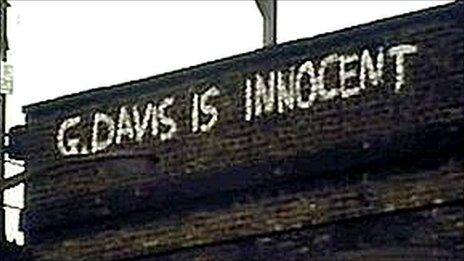The landmarks that mean you're nearly home
- Published
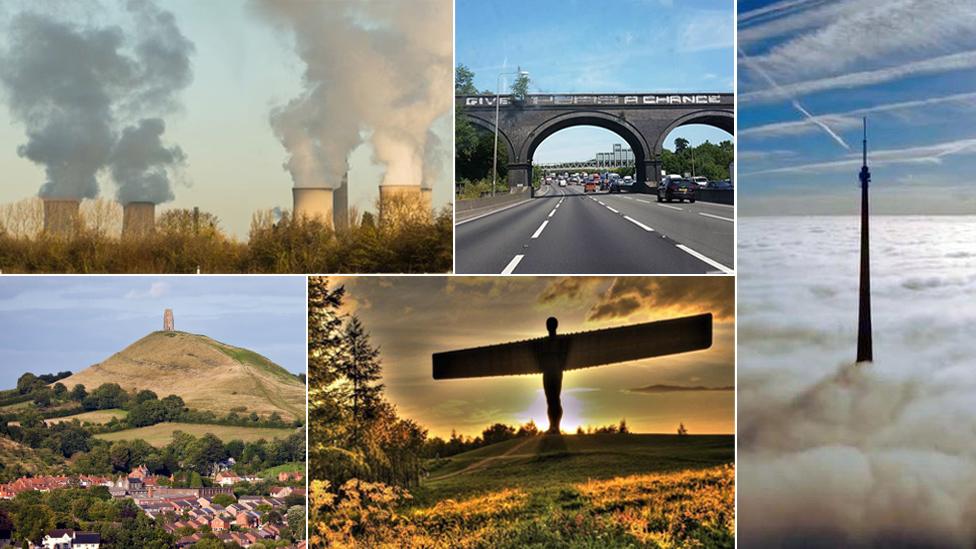
They're the sights that mean the journey's end is near and the comforts of home await. From towers to trees and works of art, BBC News takes a trip around some of your favourite roadside landmarks that loom large above the landscape.

Cookworthy Knapp, Devon
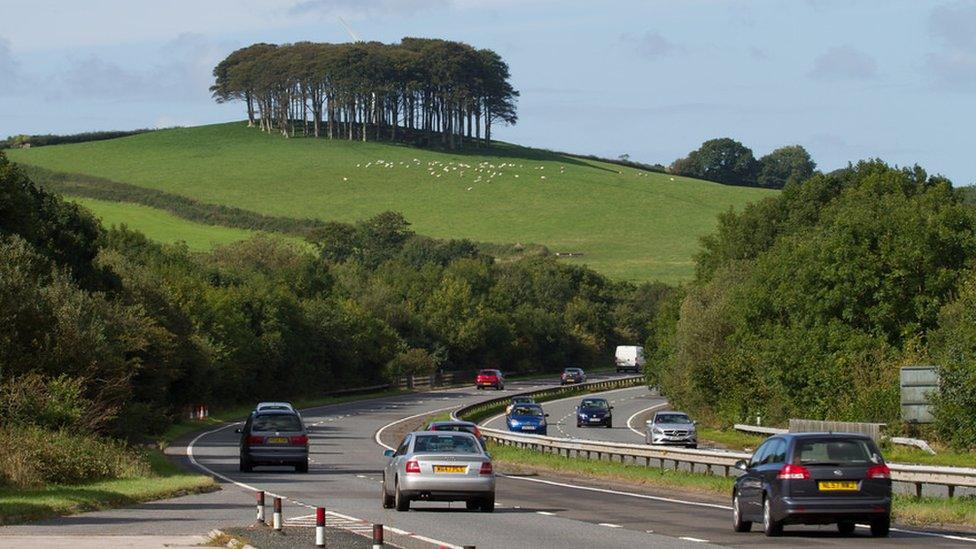
This impressive clump of trees can be seen on the approach into Cornwall on the A30
The copse of 140 beech trees stands proudly atop a hillside to the south of the A30 at Lifton on the approach to Cornwall from Devon.
Local historians believe the trees were planted in about 1900, either as a landscape feature to mark the northern edge of the Lifton Park Estate, or as cover for pheasants.
Artist Katy Stoneman, who is from the area, said: "They are known to my children as 'Mummy's trees' because of my paintings.
"As it is such an iconic view and means so much to visitors and locals alike, it is known by many different names: 'Cornwall beyond', 'Grandma's trees', 'nearly home'," she said.

Cookworthy Knapp has inspired many artists
Diana Kempster, from Launceston, said: "We used to think it was 'our copse' (small-minded arrogance!) and would chirp out 'nearly there'.
"There is something almost ethereal and otherworldly about the copse... counting everyone safely in then bidding them a safe goodbye."

Transmitter at Emley Moor, West Yorkshire
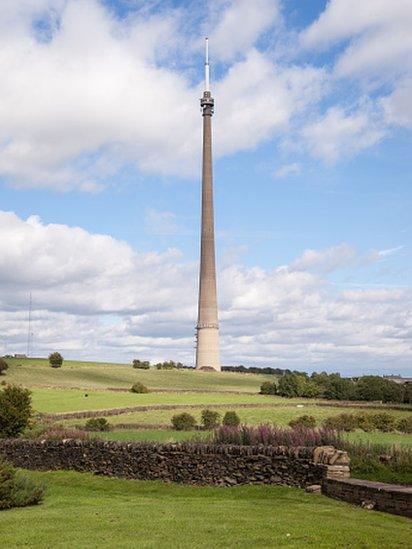
The concrete tower is the tallest self-supporting structure in the UK
The Arqiva Tower transmitter, which overlooks the Pennines and West Yorkshire, is known by locals as the Emley Moor Mast. The 1,083ft (330m) Grade II-listed structure is taller than The Shard in London.
Its television coverage area is one of the largest in the UK, serving most of Yorkshire including Hull, Leeds, Sheffield and York.
Emily Wells told the BBC: "I've lived in Flockton all my life so see it every day from my window. Driving past, I never tire of slowing down and looking up.
"I went up a couple of years ago, which was amazing. I cried as we walked out on to the gallery as it took my breath away."
Teacher Lindsay Burrell said: "I grew up in the shadow of the mast for nearly 20 years. As a child we used to play 'first to spot the mast wins' on journeys back home from visiting family or going on holiday."
Vikki Brown said: "I suppose it is a bit of a constant in a mad world, and, crazy as it might sound, it feels as though there's an invisible string that tethers me to it."
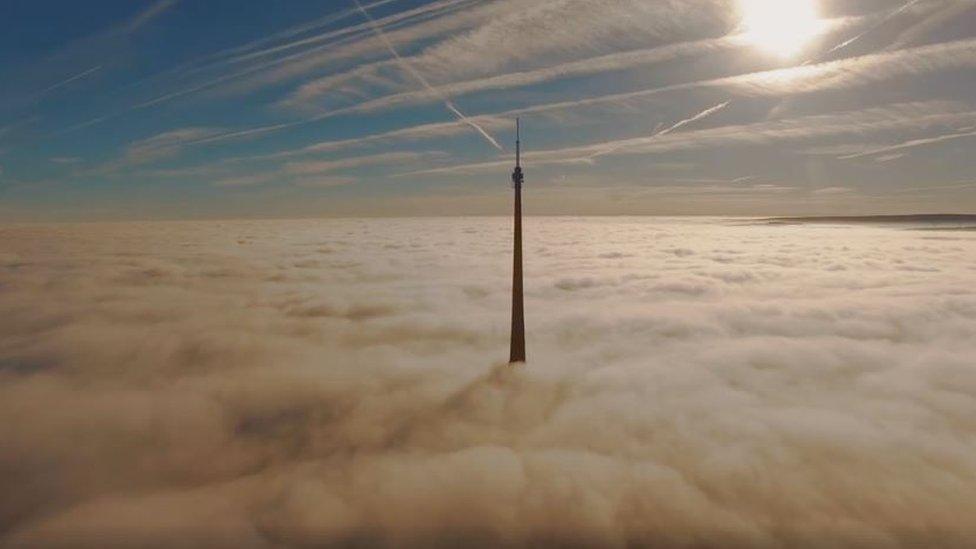
Ed Midgley captured this drone footage of the mast shrouded by clouds
Jill Kynaston, 60, said: "My mum used to cry when she saw the mast after fab holidays because we were nearly home and the holiday was definitely over."
Kate Watto, 40, recalled that when she was a child her father made a video of their new house in Emley including footage of the mast, complete with a classical music soundtrack.
"As we turned down the hill from Wakefield and caught sight of the mast for the first time, we knew we were nearly home and we all started singing the main theme," she said.
"From then on this was our soundtrack whenever we spotted the mast after a trip away."

Didcot Power Station, Oxfordshire
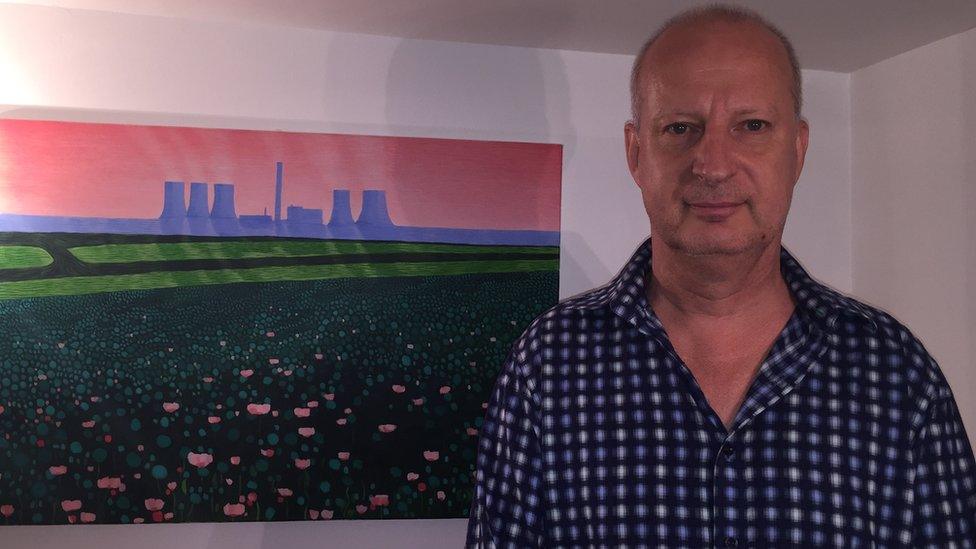
Francis Caton loves Didcot Power Station so much he had a painting commissioned
The site's chimney is one of the tallest structures in the UK and its three remaining cooling towers - which are due to be demolished - can be seen from miles around.
The coal-fired Didcot A power station was turned off in 2013, after 43 years in service.
During demolition work on the site in February 2016, four men were killed when part of a boiler house collapsed.

The three southern cooling towers have been knocked down, although the others are yet to be demolished
Francis Caton, from Abingdon, said he had an emotional association with the site.
"I was sent away to boarding school in York, where I was bullied without respite," he said.
"On my long train journey home from York to Didcot at the end of each term, I used to view the lights of the power station in the night sky from the open train window from Oxford onwards, watching them get slowly closer with each clickety-clack of the train's wheels whilst the wind whistled through my hair, knowing that when I finally reached the lights I would be safe."
Emily Rees, 35, from Oxford, said: "I am nostalgically attached to the cooling towers now.
"They are such a big part of the horizon and can be pretty striking when the morning sun hits them."

Glastonbury Tor, Somerset

The terraces on Glastonbury Tor have been dated to about 10,000BC
Glastonbury Tor has been a location of religious significance for more than 1,000 years and is known as "one of the most spiritual sites in the country", according to the National Trust.
Pagan beliefs are still "very much celebrated" at the tor and legend has it King Arthur and his knights of the round table also visited it, the trust said.
Bethany Dawes said: "It has inspired a monument in a story I am writing, it is that special... we also recently released the ashes of our family dog around the tor."
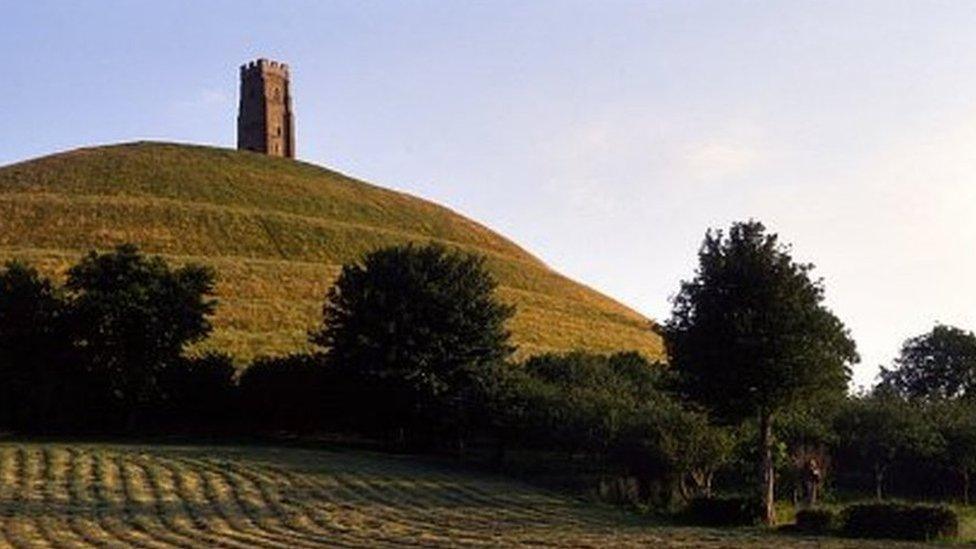
Grade I-listed building St Michael's Tower sits atop the tor
Kate Cook told the BBC: "I lived in Glastonbury all my life until six years ago... coming down over Wells Hill, my heart skips a beat as I know I'm home.
"My memories are climbing the tor nearly every day in the school summer holidays with our jam sandwiches and a bottle of water. Then we would roly-poly down the hill," she said.
Hazel Cutting said: "My husband used to live in Glastonbury. The tor was visible whilst we were on the M5 when I was taking the kids down for the weekend.
"I get butterflies when I see it."

'Give peas a chance' graffiti, Buckinghamshire
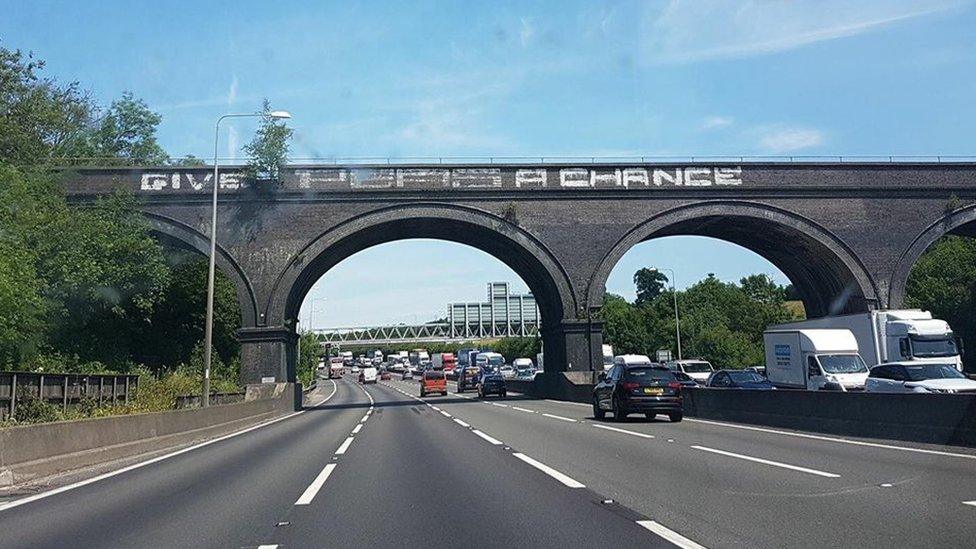
The graffiti is not thought to refer to the popular green legume
"Peas" was reportedly the name of a London graffiti artist who daubed his name on the M25's only Edwardian bridge, between junctions 16 and 17, near Uxbridge.
The words "give" and "a chance" were added later, with the amended graffiti thought to refer to his frequent arrests, according to a historic building report by Oxford Archaeology.
The "Peas" tag can been seen in several places, particularly on other bridges.
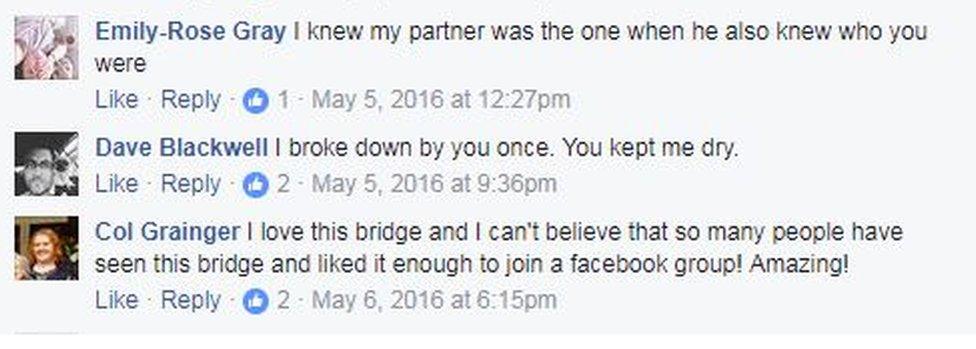
The bridge has a dedicated following
The bridge has its own Facebook page, external with about 6,500 followers.
Anne Bradford said: "This is a special bridge that marks some family memories of journeys along this part of the motorway."

Angel of the North, Tyne and Wear

The 20-metre tall Angel of the North stands atop a former coalmine
The iconic 200-tonne steel angel has loomed over the A1 in Gateshead since 1998.
The sculpture, which is 20 metres tall and has wings measuring 54 metres across, has become a much-loved piece of public art.
Dan Homarus said: "The Angel means so much to me... any time I drive back to the 'Toon' now, the sight of the Angel brings back a decade of memories.
"It's one of my favourite pieces of outdoor art in the UK: it epitomises the North East with its rusty elegance, flying out of the old coalmine of the past. I love it."

The famous sculpture is the work of Antony Gormley
For Liam Heenan, from Newcastle, the first glimpse of the Angel is a welcome reminder he is nearly home.
"When you have driven all day up the M1 and A1, the sight of the Angel of the North to your right means you're only 10 minutes away from a deserved cuppa," he said.
Rachel Wearmouth said: "It is like a relative that you are forced to see at Christmas, and when you do you're glad they're weathering life so well.
"It keeps on keeping on, much like me Mam and the poor old commuters stuck in traffic on the A1 every morning."

This story was inspired by responses to How do you know when you're nearly home?
- Published22 August 2016
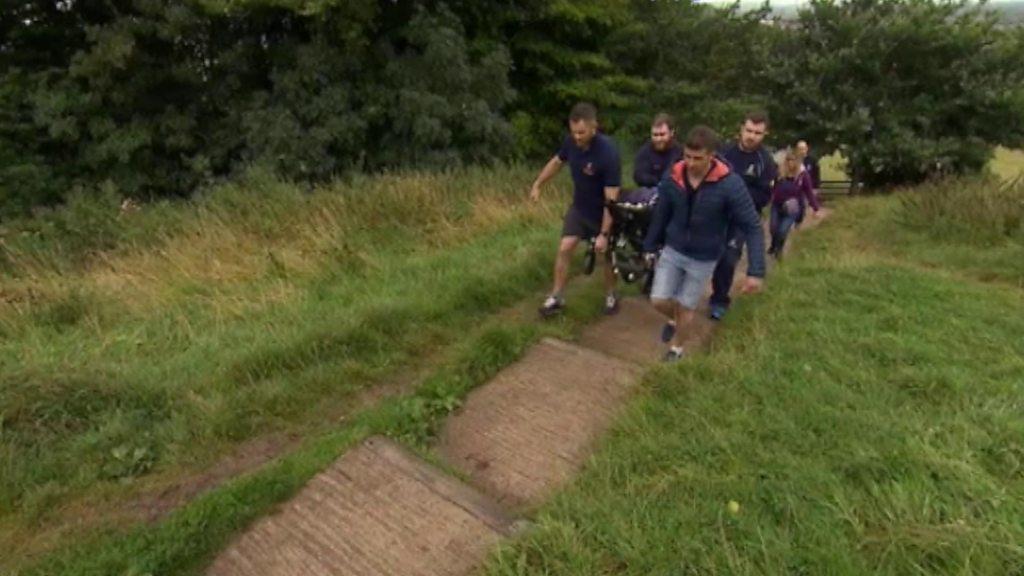
- Published16 July 2015

- Published13 June 2014
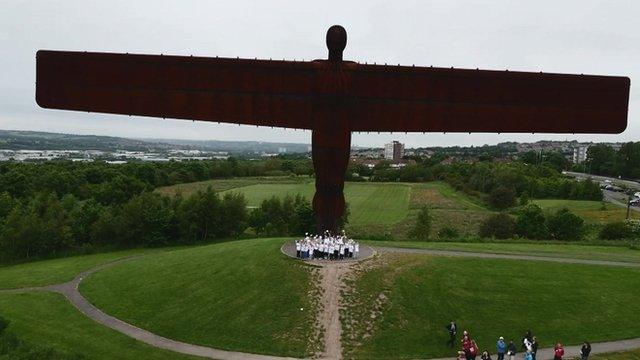
- Published16 June 2013
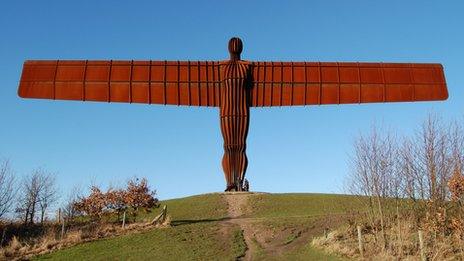
- Published25 May 2011
